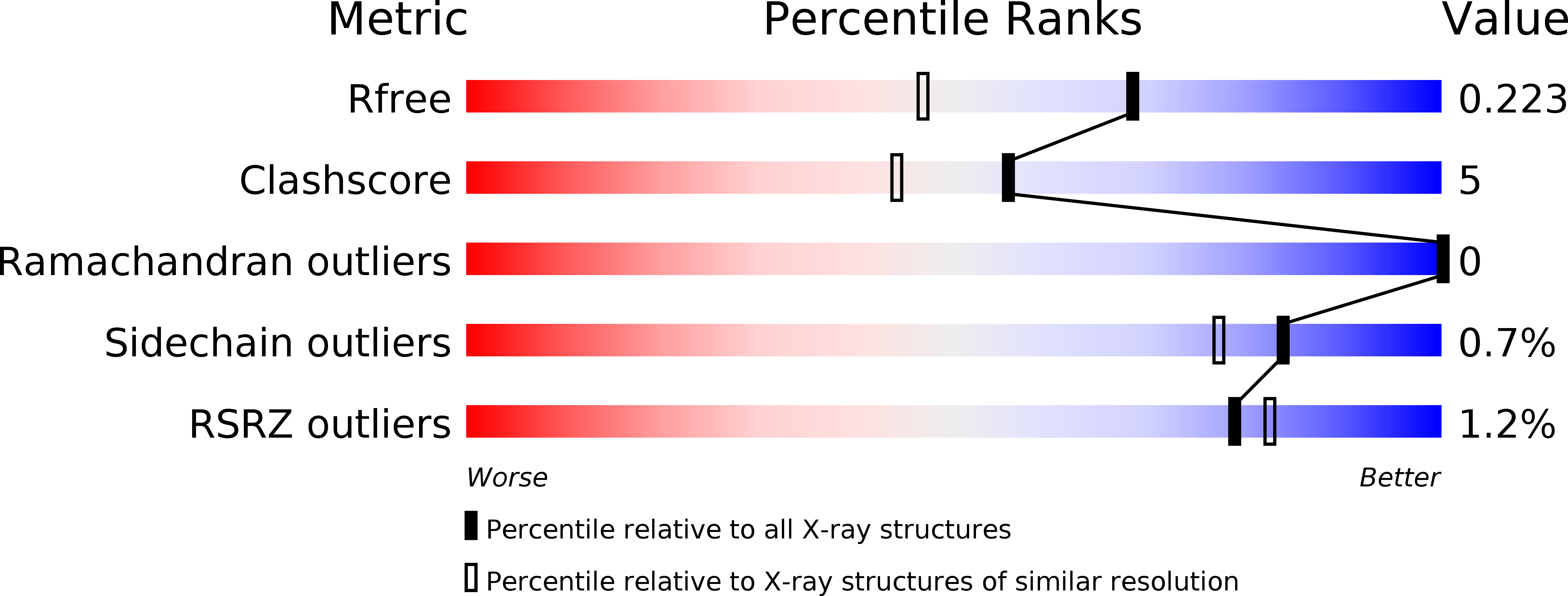Two Intramolecular Isopeptide Bonds are Identified in the Crystal Structure of the Streptococcus Gordonii Sspb C-Terminal Domain.
Forsgren, N., Lamont, R.J., Persson, K.(2010) J Mol Biol 397: 740
- PubMed: 20138058
- DOI: https://doi.org/10.1016/j.jmb.2010.01.065
- Primary Citation of Related Structures:
2WOY, 2WQS, 2WZA - PubMed Abstract:
Streptococcus gordonii is a primary colonizer and is involved in the formation of dental plaque. This bacterium expresses several surface proteins. One of them is the adhesin SspB, which is a member of the Antigen I/II family of proteins. SspB is a large multi-domain protein that has interactions with surface molecules on other bacteria and on host cells, and is thus a key factor in the formation of biofilms. Here, we report the crystal structure of a truncated form of the SspB C-terminal domain, solved by single-wavelength anomalous dispersion to 1.5 A resolution. The structure represents the first of a C-terminal domain from a streptococcal Antigen I/II protein and is comprised of two structurally related beta-sandwich domains, C2 and C3, both with a Ca(2+) bound in equivalent positions. In each of the domains, a covalent isopeptide bond is observed between a lysine and an asparagine, a feature that is believed to be a common stabilization mechanism in Gram-positive surface proteins. S. gordonii biofilms contain attachment sites for the periodontal pathogen Porphyromonas gingivalis and the SspB C-terminal domain has been shown to have one such recognition motif, the SspB adherence region. The motif protrudes from the protein, and serves as a handle for attachment. The structure suggests several additional putative binding surfaces, and other binding clefts may be created when the full-length protein is folded.
Organizational Affiliation:
Department of Odontology, Umeå University, Umeå, Sweden.
















